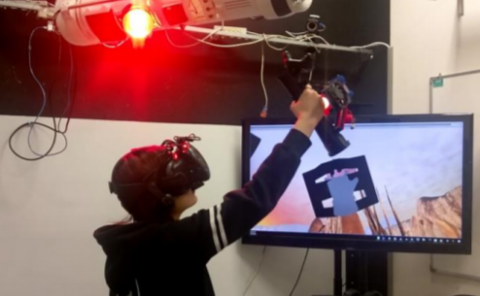Queasy Rider: How Head Movements Influence Motion Sickness in Passenger Use of Head-Mounted Displays
PubDate: September 2021
Teams: LMU Munich
Writers: Jingyi Li;Agnes Reda;Andreas Butz
PDF: Queasy Rider: How Head Movements Influence Motion Sickness in Passenger Use of Head-Mounted Displays

Abstract
In autonomous cars, drivers will spend more time on non-driving-related activities. Getting their hands off the wheel and eyes off the road, the driver, similar to a rear-seat passenger today, can use multiple built-in displays for such activities or even mobile head-mounted displays (HMDs) in virtual reality (VR). A wider motion range is known to increase engagement, but might also amplify the risk of motion sickness while switching between displays. In a rear-seat VR field study (N=21) on a city highway, we found a head movement range of ± 50° with a speed of 1.95m/s to provide the best trade-off between motion sickness and engagement. Compared to the pitch (Y) axis, movement around the yaw (X) axis induced less discomfort and more engagement with less motion sickness. Our work provides a concrete starting point for future research on self-driving carsickness, starting from today’s rear-seat passengers.



